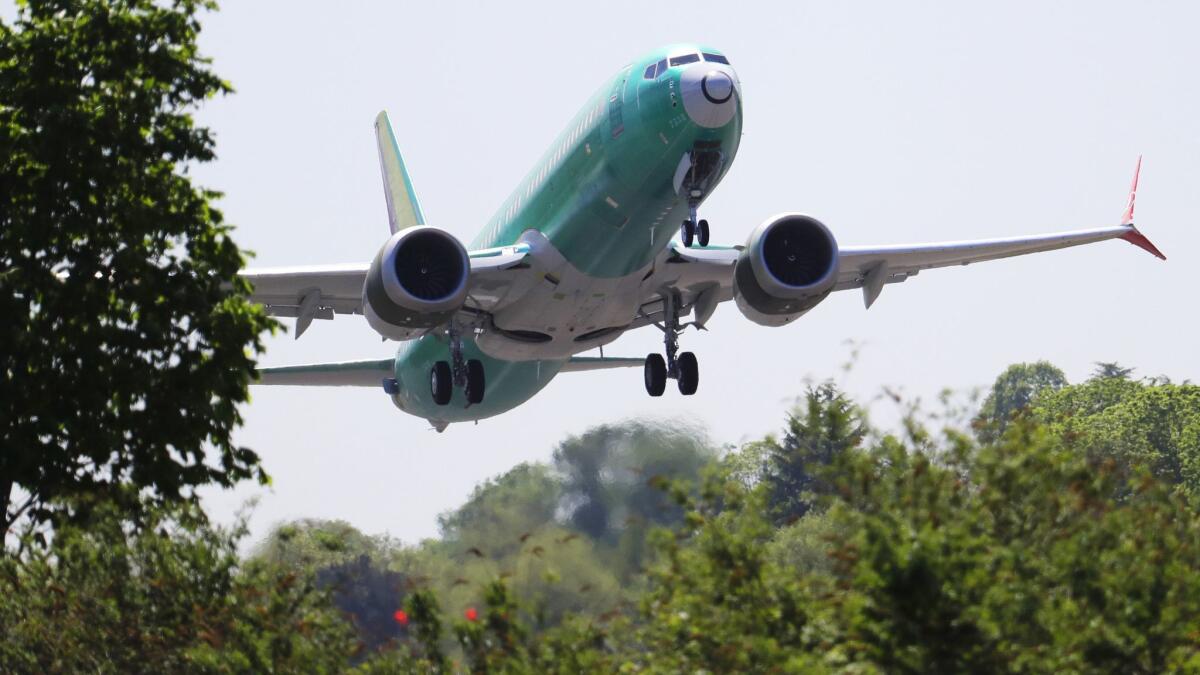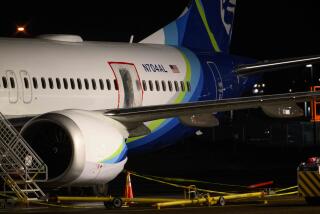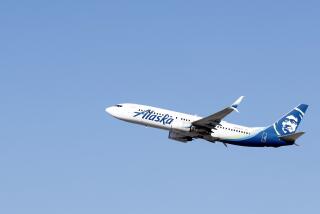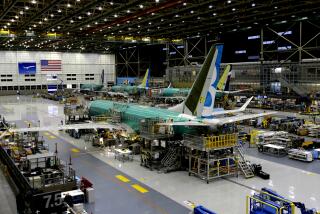Ethiopian Airlines pilot warned more 737 Max training was needed months before crash

An Ethiopian Airlines pilot told senior managers at the carrier months before one of its 737 Max jets crashed that more training and better communication to crew members was needed to avert a repeat of a similar disaster involving a Lion Air flight.
According to emails and documents reviewed by Bloomberg News, the pilot in December urged his superiors to bolster training on a 737 Max flight-control feature so crews would be better prepared for what the Lion Air pilots encountered in October before plunging into the Java Sea, killing all aboard.
“It will be a crash for sure,” if pilots struggling with a malfunction of Boeing’s flight-control system on the 737 Max also encountered, for example, a cockpit warning that they were flying too close to the ground, the pilot, Bernd Kai von Hoesslin, wrote in a Dec. 13 email.
On March 10, an Ethiopian Airlines plane operated by two other pilots crashed minutes after takeoff from Addis Ababa, killing 157.
While the crash played out differently from how von Hoesslin described, he accurately foresaw the chaos and peril of multiple cockpit warnings that the pilots dealt with during the March crash. Von Hoesslin’s communications add another layer to the competing narratives that have shaped the public’s view of the 737 Max crisis — and of who’s most responsible for what went wrong.
In 418 pages of previously unreported correspondence and documents he sent to airline managers, von Hoesslin cited a number of concerns he said needed to be addressed relating to maintenance, pilot rest and operational procedures. His concerns bring fresh attention to the crash of the Ethiopian Airlines jet, which prompted a worldwide grounding of Boeing’s top-selling passenger jet and the company’s most significant crisis in decades.
Von Hoesslin declined to comment for this report. The documents seen by Bloomberg came from another person who asked not to be identified.
In a statement released on Twitter on Wednesday, the airline said it “strictly complies with all global safety standards and regulatory requirements.” It also said that the allegations “are false and factually incorrect,” and called the pilot a “disgruntled former employee.”
It’s unclear whether von Hoesslin’s suggestions for training would have made a difference, said Jeffrey Guzzetti, the former director of the U.S. Federal Aviation Administration’s Accident Investigation Division, noting that crash investigators, regulators and airlines are still evaluating the extent of additional training needed.
“I bet there were numerous other similar discussions within other 737 Max airlines following the Lion Air accident, and I bet considerations were made in some fashion with most of those airlines,” he said.
Von Hoesslin’s bosses at Ethiopian Airlines, as well as the nation’s transport minister, have cast suspicion on a malfunction of the 737 Max feature known as the maneuvering characteristics augmentation system. The Chicago-based plane maker, while careful not to be seen blaming a customer, has noted the role that pilot actions played in the Ethiopian and Lion Air disasters.
In both, pilots unsuccessfully battled automatic nose-down movements commanded by the MCAS. The movements were triggered by erroneous readings from one of the Max’s two weather vane-like “angle of attack” sensors on either side of the jet’s nose.
In the December email, von Hoesslin reminded managers that flight crews could be overwhelmed by multiple warnings and cockpit alerts that can sound during an errant activation of the MCAS. Problems with the system led to the 737 Max’s global grounding in March and shook confidence in Boeing and the FAA.
Von Hoesslin, who identified himself in the documents as a certified 737 instructor, submitted his resignation to Ethiopian Airlines in April. The documents reviewed by Bloomberg, including the December email urging additional training, were attached to von Hoesslin’s resignation letter.
In a separate development Wednesday, the head of the International Air Transport Assn. (IATA) said that he expects commercial flights of the 737 Max will not resume for at least 10 to 12 weeks.
Boeing has largely completed work on a redesigned version of the MCAS software but has yet to submit the final paperwork to the FAA. There is also a lack of agreement on the review process.
The IATA wants to see a single regulator responsible for deciding when the plane is ready to return to service, but the European Union Aviation Safety Agency plans its own examination of the 737 Max’s entire flight control system independent of the FAA.
Beene and Manek write for Bloomberg. Bloomberg reporters Julie Johnsson and Anurag Kotoky contributed to this report.
More to Read
Inside the business of entertainment
The Wide Shot brings you news, analysis and insights on everything from streaming wars to production — and what it all means for the future.
You may occasionally receive promotional content from the Los Angeles Times.










